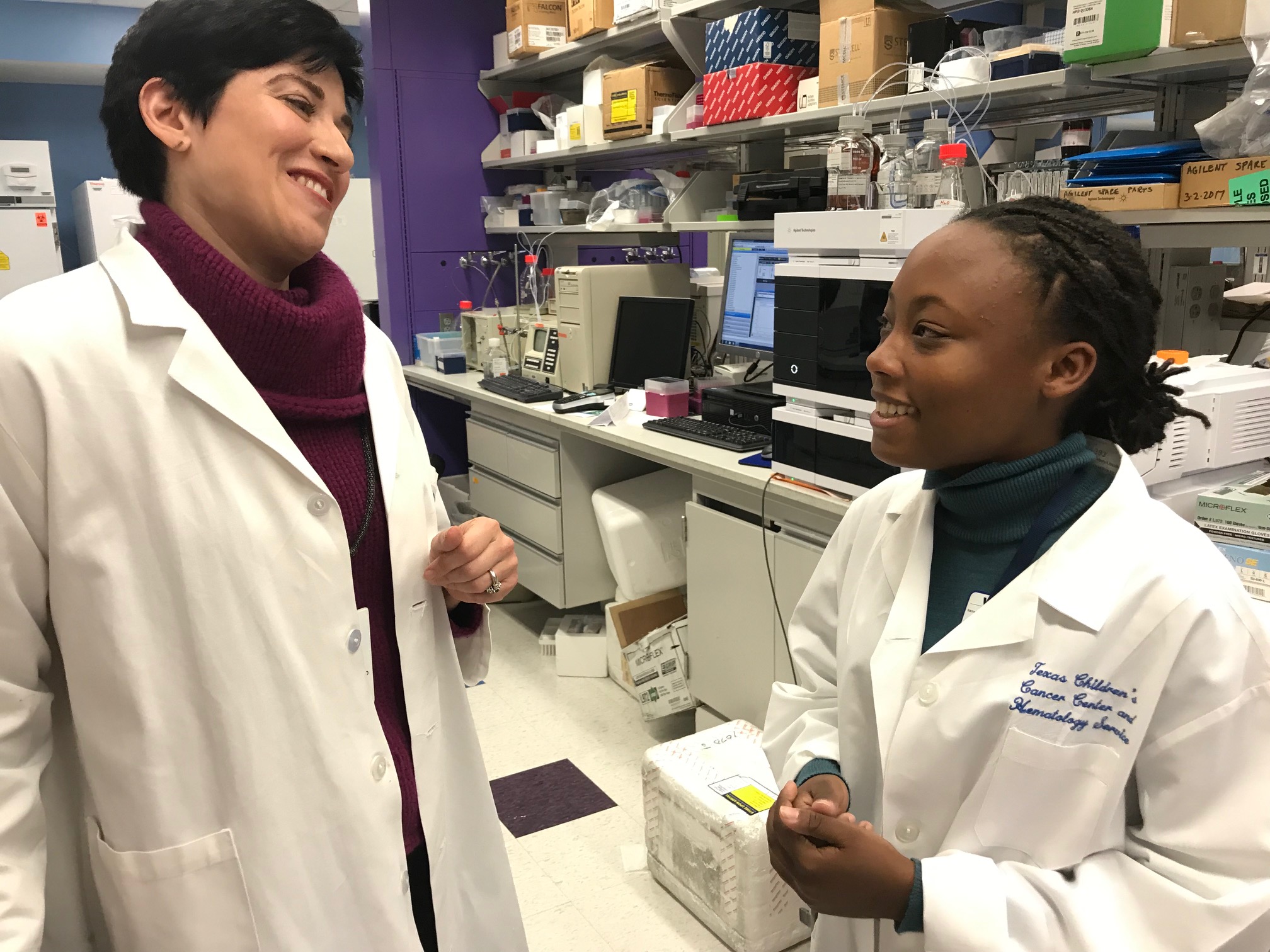
PHOTO: Patient Danielle Henry with her mentor Dr. Vivien Sheehan. Under Dr. Sheehan’s mentorship, Danielle is working to analyze differences between how the U.S. and Jamaica – which has the highest SCD ratios in the world – treat SCD.
I think, as people with Sickle Cell Disease (SCD), it’s really important to not only think about what we can’t do, but what we can do. Whenever I get sick and can’t do certain things, it gets really easy to think about all of the pain I’m in and my limitations. But, the example of others with SCD has taught me that I need to not only be a survivor, but an achiever.
Instead of just enduring my unfortunate circumstances, I can thrive in them and accomplish things I never thought a person with SCD could. Once I started doing this, SCD became less of a limiting factor in my life, and more of a motivating one. Anything I thought I couldn’t do, I needed to try to do better than anyone else. I didn’t – and still don’t – want to feel like I’m only persevering, and I don’t want others to think that way about me either.
As a survivor, I’m refusing to let SCD keep me in bed, as an achiever, I’m working hard to excel in whatever I choose to do.
-- Danielle Henry, Texas Children's patient
In celebration of World Sickle Cell Day
Each year, on June 19, countries all over the world celebrate World Sickle Cell Day, which was initially presented as a resolution by the United Nations in 2008. The goal of this day is to recognize sickle cell anemia is a public health problem and promote education about this genetic condition.
Sickle cell disease is one of the most common inherited diseases worldwide, with between 300,000 and 400,000 babies affected each year. In the United States alone, approximately 12,000 babies are born every year with sickle cell disease. This disease can occur in any race or ethnic group, but is most common in people of African or Hispanic descent. In the U.S., 1 in every 365 black-Americans and 1 in every 16,300 Hispanic Americans have sickle cell disease.
What is sickle cell disease?
Red blood cells should be shaped like a disc that looks like a doughnut with the hole filled. This shape allows red blood cells to flow freely in the blood vessels. Sickle cell disease is an inherited blood disorder of hemoglobin, a protein in the red blood cell. Sickle hemoglobin causes the red blood cells to change from a doughnut into a crescent (like a moon) or sickle shape.
Sickle-shaped red blood cells tend to clump together and block blood flow in small blood vessels. Additionally, they do not survive as long as a red blood cell without sickle hemoglobin. A combination of a low blood count (anemia) and blood vessel blockage is responsible for the complications of sickle cell disease.
How is it diagnosed?
In the U.S., sickle cell disease is diagnosed through the newborn screening process. In Texas, this testing is performed twice: once shortly after birth and then again at 1 week of age. The results of these tests go directly to the physician identified by the child’s parents, with the recommendation the child be referred to a specialized center, like Texas Children’s Sickle Cell Center. This screening allows us to diagnose and identify children with sickle cell disease before complications occur.
Having a child diagnosed with sickle cell disease can be scary for parents, but treatment of sickle cell disease and prevention of complications allow most patients to live into their 40s to 50s. This begins with the initiation of penicillin shortly after birth to prevent life-threatening infections. It is important for these children to be seen in a clinic that specializes in sickle cell disease where parents can receive education on the disease and complications, screening for those complications, and disease modifying treatments like hydroxyurea or chronic transfusions.
Where to find help
Texas Children’s Sickle Cell Center is one of the largest centers of its kind in Texas and the U.S. Our multidisciplinary team is made up of board-certified pediatric hematologists, hematology-trained nurse practitioners and physician assistants, research staff, nurse coordinators and social workers. Children with sickle cell disease can also be seen in our clinics at Texas Children’s Hospital West Campus and Texas Children's Hospital The Woodlands.
Our program conducts state-of-the-art clinical and laboratory research aimed at gaining a better understanding of the disease, preventing its complications, finding more treatment options and ultimately finding a cure. The center’s research funding is provided by government grants and the philanthropic support of a variety of community-based organizations. This partnership allows us to offer even more novel therapies to the thousands of children we treat.
Together with education and awareness, we can remove the stigma associated with this condition. We can be the voice of the thousands of people who are diagnosed with this condition each year. So, this World Sickle Cell Day, let us celebrate the millions of people living with sickle cell disease and focus our attention on finding more treatments and inevitably a cure for this condition.